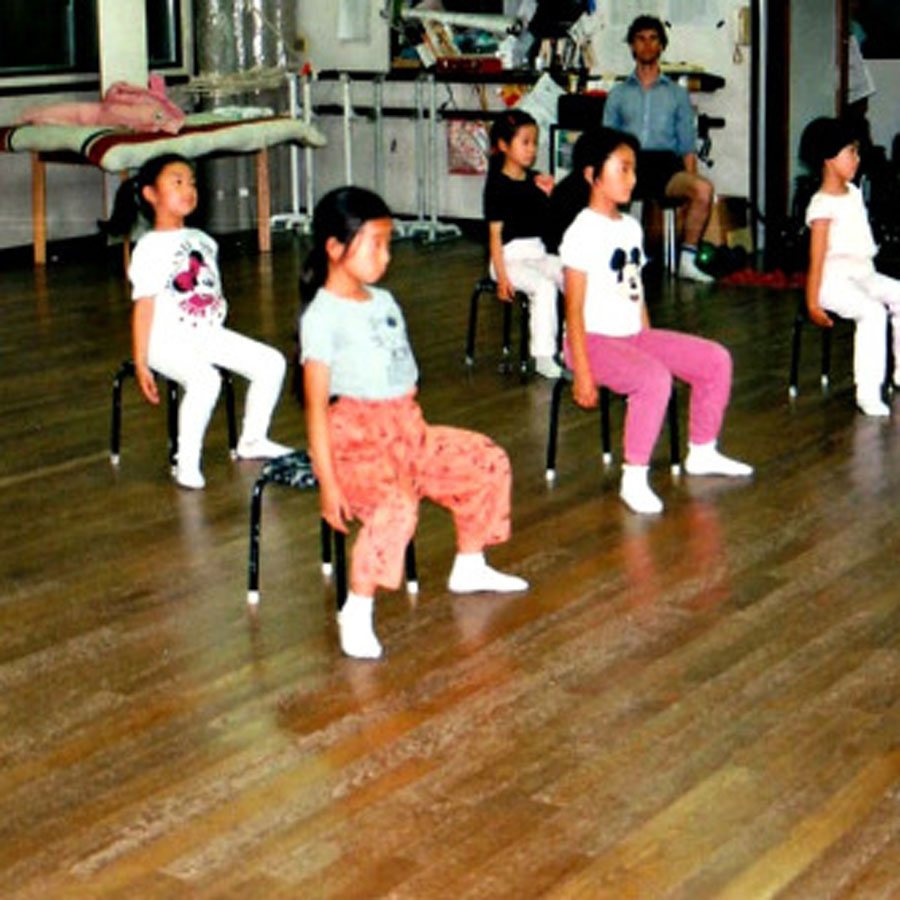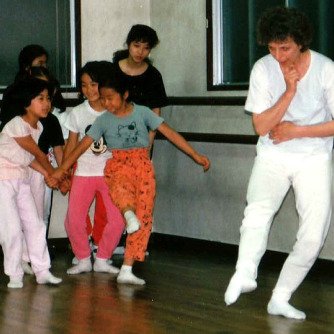Japan
Tokyo, Japan, 1989
courtesy Toshie Okabe
Chihiro Beppu (Itcush Method, Mitzvah Technique Teacher): “The ballerina Yoko Ichino (National Ballet of Canada) had studied Mitzvah with Amelia. When she was invited to choreograph for Hideko Ishizawa's school in Japan, she introduced Hideko and her daughter Komako to Mitzvah.
Hideko was 100% Ballet, and she quit ballet and established the Mitzvah Technique Academy! Hideko didn’t train as a teacher but her daughter Komako did private sessions with Nehemia and in the mid-90's, trained with Amelia in Saskatoon. She no longer teaches Mitzvah, but is teaching Ballet. Her mother now practices a Chiropractic approach for Ballet called Noguchi Chiropractic.”
Toshie Okabe (Mitzvah Technique Teacher): “I met Amelia when I was 13 or 14 at Kunitachi Ballet Studio, doing ballerina’s body care through Mitzvah around 23 years ago, when I was doing ballet. I wanted to be a better ballerina and I looked up to the students at the Kunitachi Ballet Studio.”
Chihiro Beppu: “As a child, I had an impression of Amelia as gentle and soft as air, like the airiness just hugs you. I didn’t have that kind of person around me at the time. So it’s not the mother, but it’s really warm, like somebody who forgives you, who sounds like a god.
Later, many people said that Mitzvah had influenced my dancing, they 'd say of me “she feels very comfortable in her body”. I noticed a difference in my body and how it connected to the floor, details in my body, in my balance. Now what excites me is using the body, teaching how to use the body in daily activities, how to connect to the body.
Amelia used to say Japanese are usually smaller, so it’s easy to work on them in privates. Usually, Japanese people are hard working - so that’s really good, they do exercises as homework for example. But the flip side is they can be too strict or too vigorous. Amelia found these national traits of Japan very interesting.
Amelia went to an archery place, and when she first attempted archery, because she knew pretty much everything about her body, she had centre arch, she had force in the centre, she could do it. The people there at the archery were really surprised, particularly to find that it was her first time, and said she had really good use of the body.
Because Mitzvah is the fundamental practice of movement, if you do Mitzvah, you can approach the centre which is the goal of the martial arts. That’s why when Amelia tried to do the archery, she could just do it. Mitzvah or Amelia’s work comes from the back. We put hand on the back. But in martial arts, in Japanese martial arts, it’s this centre (dantian/solar plexus). That’s the key difference. I think about that change between using the back or the using of the solar plexus. But I’m not sure what Amelia would say.
Last time I saw Amelia, she told me “Chihiro, you can’t stop dancing”, but I’m not dancing right now; that makes me feel a little bit nervous and uneasy. I didn’t understand what she meant at the time, but now I’m not dancing and I understand. Amelia used to say:
“I’m not a Master. You learn everything that you can from me and then you figure it out after that. You have to find your own way.”
Amelia used to say “I do this, but you don’t necessarily have to do this way.” So now I’m finding that through my private sessions. I have some questions in myself, what I do, how is this doing, or what am I doing. I want now to study something different from Mitzvah and I’m kind of figuring out, trying to find a way, seeking things. I feel it’s ok to do that. I’m studying craniosacral therapy and innate therapy (which comes from Japan).
During this process of study of different methods, I feel like it’s impossible to fix somebody’s body. I can’t really do something to somebody’s body. And I think about the meaning of the private lessons. Yes it’s guiding to the better way, and fixing parts of the body, teaching the body how to use them – but is it really necessary? Is it really necessary to do something from outside?
Amelia’s work always focussed on releasing. Eventually the dancers could not dance anymore. It’s a peeling off, but it’s “not do, not do, not do” that was, I think, the process of Amelia’s work, the progression.”


